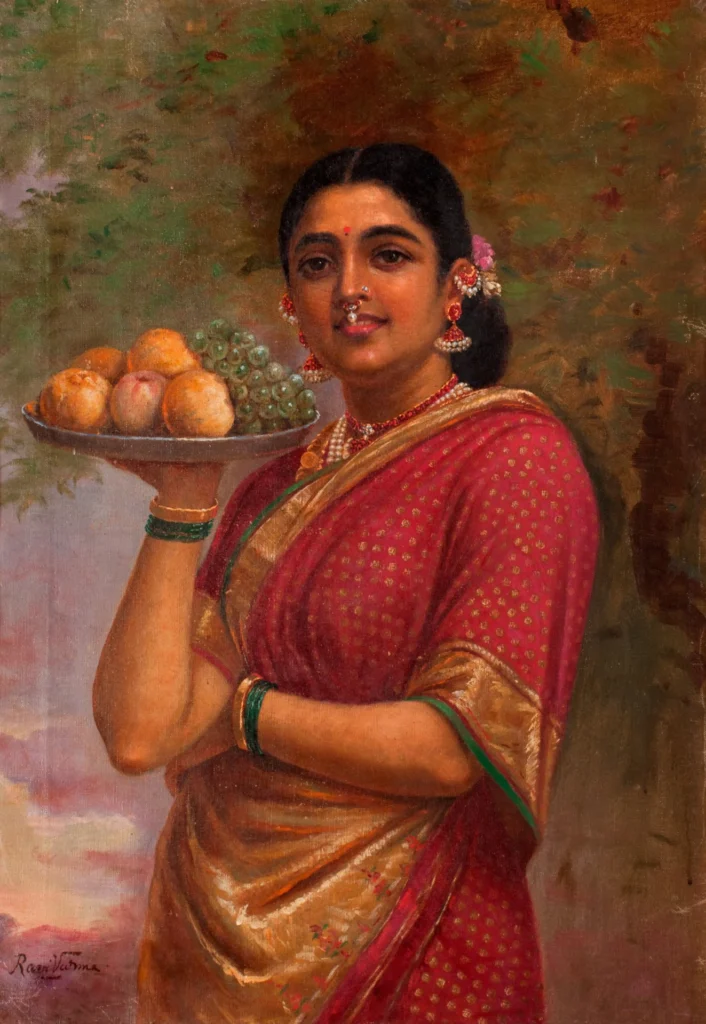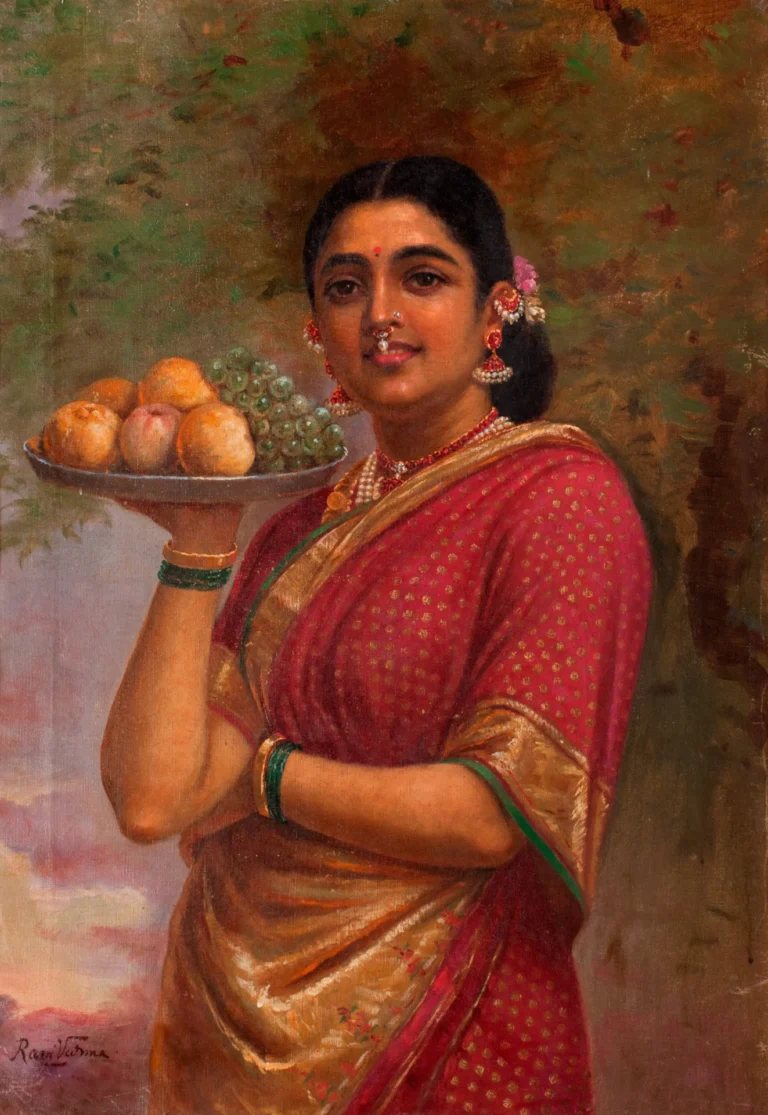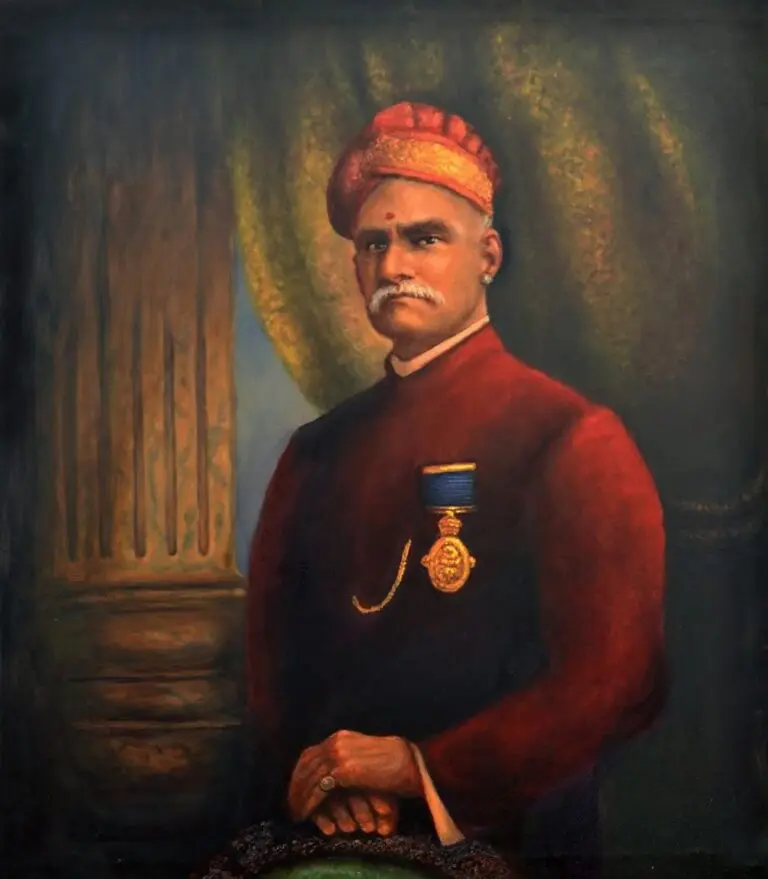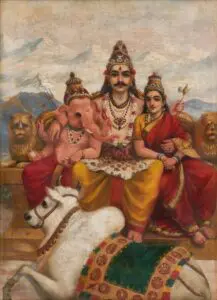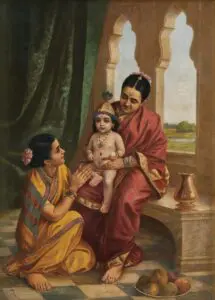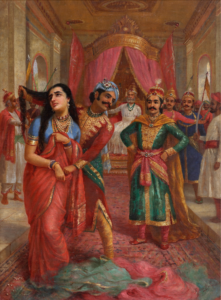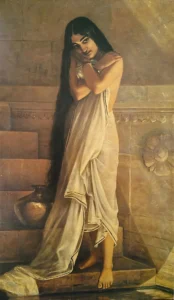The Maharashtrian Lady
In The Maharashtrian Lady, Raja Ravi Varma captures the quiet elegance and grace of a woman from Maharashtra. Dressed in traditional attire, she is portrayed with an air of dignity and poise. The vibrant colors of her saree contrast beautifully with the soft, serene expression on her face. Her posture, holding a brass plate, conveys the strength and resilience of rural women, and Varma’s attention to detail gives her character a sense of timelessness. The naturalistic style and intricate detailing bring out the cultural richness of Maharashtra, and the painting evokes a sense of admiration for the woman and her culture.
Late 19th Century
About the Artwork
Raja Ravi Varma's painting, commonly referred to as The Maharashtrian Lady or Maharashtrian Lady with Fruit, is a significant work that exemplifies his mastery of blending Indian themes with European artistic techniques. Painted in 1893, this artwork showcases a beautiful unidentified Maharashtrian woman adorned in a traditional crimson silk sari, holding a tray of fruits, which adds a layer of cultural richness to the piece.
Artistic Features
- Subject and Composition: The painting features a woman dressed in a vibrant red sari with intricate gold motifs. She has a bindi on her forehead, symbolizing her marital status and cultural identity. The subject's confident gaze and relaxed posture convey a sense of empowerment and grace.
- Symbolism: The fruits she carries—apples, oranges, and grapes—along with the flowers often included in Ravi Varma’s works, symbolize love and abundance. The woman's direct gaze engages the viewer, creating an interactive experience.
- Cultural Significance: This painting is sometimes associated with the character Madri from the Mahabharata, although it does not explicitly depict her. Madri is described in ancient texts as an exceptionally beautiful woman draped in crimson silk. This connection adds depth to the painting, linking it to Indian mythology.
Did You Know
Did you know that the woman’s attire in this painting is a direct representation of the traditional Maharashtrian look? The vibrant colors and the way the fabric is draped evoke the distinct cultural style of Maharashtra, which Varma captured with remarkable authenticity.
Did you know that in this painting, the woman’s calm, serene expression symbolizes not just beauty but the quiet strength of rural women in Maharashtra? Raja Ravi Varma’s depiction of her isn’t just focused on her looks, but rather the inner strength that she embodies.
Did you know that Varma’s detailed rendering of the woman’s jewelry and the texture of the brass plate and fruits highlights his commitment to realism? His art wasn’t just about the aesthetic, but about bringing a cultural authenticity to his subjects, even in simple daily moments like this one.




